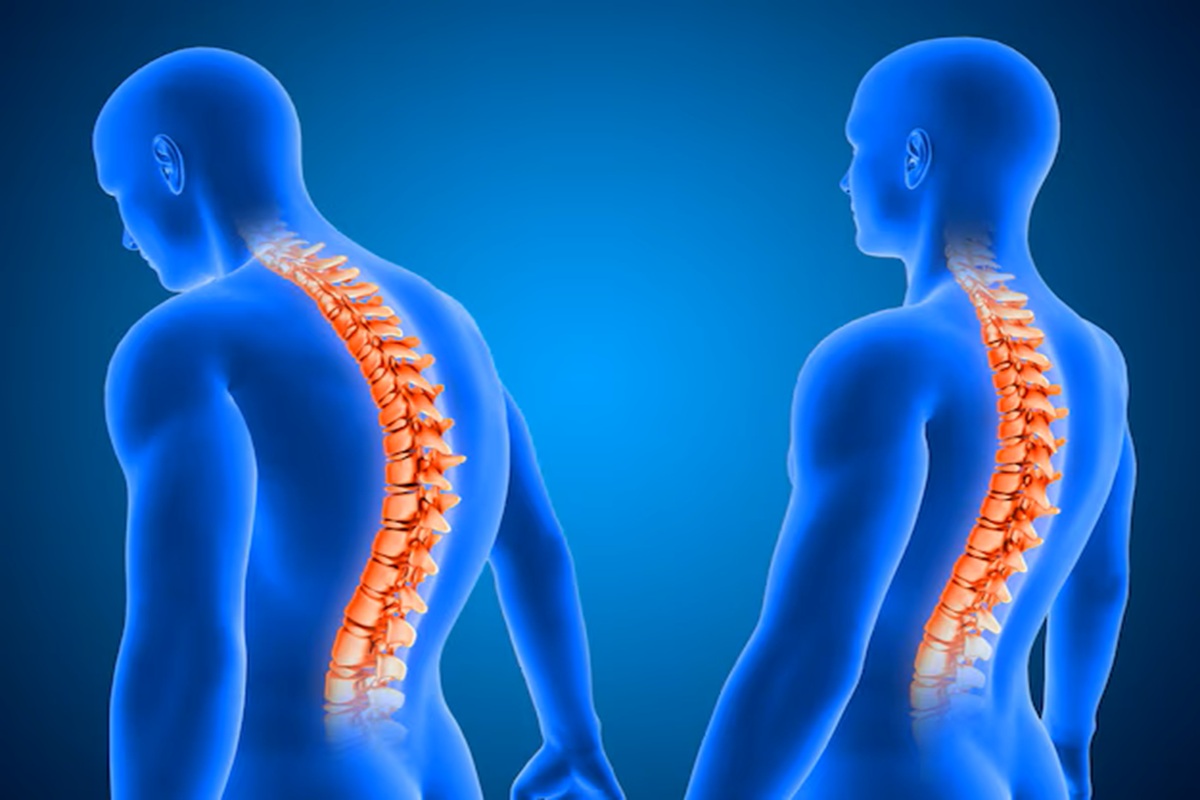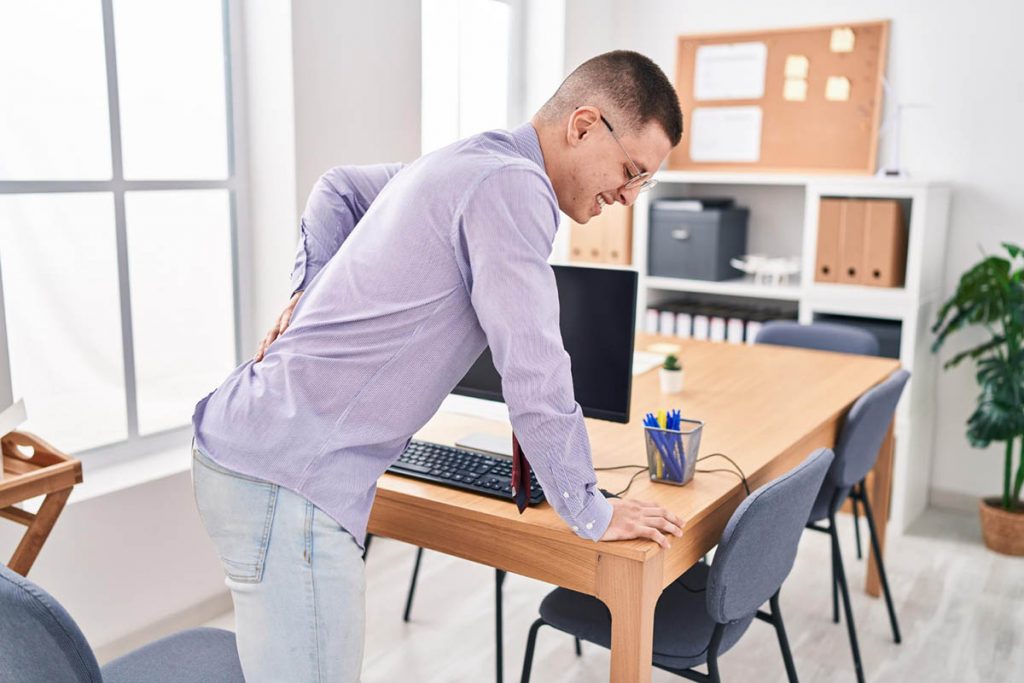Back pain is one of the most common health issues worldwide, impacting people of all ages. While various factors can contribute to back pain, poor posture is a leading cause, often overlooked until discomfort becomes chronic. But how can poor posture result in back pain? Poor posture places undue stress on the spine, muscles, and joints, leading to conditions like muscle strain, disc compression, and chronic discomfort. Understanding how poor posture results in back pain can help you take the right steps to address it. This blog covers the causes of bad posture back pain, how incorrect postures lead to discomfort, and actionable solutions to improve your posture and prevent pain.
What Is Poor Posture?
Poor posture refers to body positioning that deviates from proper spinal alignment, causing unnecessary strain on muscles, joints, and ligaments. Whether you’re slouching at your desk, hunching over your phone, or lifting incorrectly, poor posture can disrupt the natural curves of the spine and lead to long-term issues, including chronic back pain, muscle imbalances, and lumbar herniated disc problems.
Common Poor Posture Habits
Everyday habits, from slouching to improper lifting, can accumulate into significant back problems. This section identifies common posture mistakes and how they affect your spinal health, offering guidance to correct them before they cause lasting damage. Each type of posture error can lead to specific issues:
Sitting Posture
Unsupported sitting positions, such as slouching or leaning forward in your chair, are among the most common culprits of back pain. Prolonged sitting, especially with poor ergonomics, places undue stress on the lower back, leading to lumbar strain, muscle spasms, and nerve compression. Incorporating an ergonomic office chair and proper lumbar support can help reduce these risks.
Standing Posture
Standing with weight concentration on one leg, poking chin posture, or an overly arched back (swayback) causes uneven strain on muscles and joints. But why does bad posture cause back pain in these scenarios? These asymmetrical body positions disrupt spinal alignment, leading to muscle imbalances and joint inflammation. Over time, this can contribute to bad posture back pain location across the lower back, hips, or neck, making it essential to maintain proper posture while standing.
Lying Posture
The way you sleep can greatly influence your back health. Poor sleeping posture or an unsupportive mattress can misalign the spine, leading to stiffness and pain. This section provides tips on finding the ideal sleeping position and setup for spinal support.
Walking Posture
Hunched walking or walking with a forward head disrupts spinal alignment and can lead to kyphosis (excessive curvature of the thoracic spine). This posture places stress on the neck, shoulders, and mid-back, contributing to conditions like text neck or tech neck.
Lifting Posture
Improper lifting, such as bending from the waist instead of using your knees and legs, significantly increases the risk of lumbar strain, slipped discs, and other spinal injuries. Learning proper posture when lifting, like the golfer’s lift, can prevent these injuries.
How Poor Posture Results in Back Pain

Poor posture directly impacts the spine and surrounding structures, leading to various forms of back pain. From muscle imbalances to nerve compression, the effects can range from mild discomfort to severe, chronic pain. Learn about the specific ways posture can harm your back and what you can do to address it.
Muscle Strain and Imbalance
Poor posture often results in muscle imbalance, where some muscles overwork while others weaken. This creates muscle strains, leading to discomfort and reduced mobility. For example, slouching can overwork the back’s upper muscles while weakening the lower muscles.
Excessive Pressure on Joints
Bad posture can overload the joints in your spine, causing inflammation and discomfort over time. This section delves into the impact of excessive joint pressure and how maintaining proper alignment can prevent this issue.
Disc Compression
Slouching or improper spinal alignment can compress the discs between your vertebrae, leading to pain and even conditions like a lumbar herniated disc. This section explores how bad posture contributes to disc compression and the steps to avoid it.
Reduced Blood Flow
Poor posture not only strains muscles but also restricts blood flow to essential tissues. Reduced circulation slows recovery, increases inflammation, and can worsen back pain. Learn how to counteract these effects through better posture and regular movement.
How Back Pain Can Also Affect Your Posture
Bad posture and back pain create a vicious cycle. Chronic back pain can force individuals into compensatory postures, such as flatback or forward bend, further exacerbating misalignment. Pain also discourages movement, which can lead to a sedentary lifestyle and worsen posture-related problems.
Signs and Symptoms That Poor Posture Is Causing Back Pain
While issues like back and neck pain are the most common outcomes of poor posture, they are not the only concerns. Incorrect alignment can also lead to problems like reduced balance, persistent headaches, and even difficulty breathing, all of which impact overall well-being. These additional symptoms can often be overlooked, yet they serve as significant indicators that your posture may need immediate attention. The following signs often indicate that bad posture is causing back pain:
Stiffness and Discomfort
Stiffness is often the first sign of posture-related back issues. It usually develops when muscles and joints remain in a compromised position for too long. This section explains the causes of stiffness and provides tips for easing discomfort.
Upper, Mid, or Lower Back Pain
Back pain can occur at different locations, each with its own causes and implications. Poor posture often exacerbates pain in the upper, mid, or lower back. Dive into this section to understand how posture impacts these areas and what you can do to find relief.
Fatigue During or After Prolonged Sitting
Feeling drained or uncomfortable after long periods of sitting can signal that your posture needs adjustment. Poor sitting posture contributes to uneven muscle strain and fatigue, which can impact your productivity and well-being. This section explains the underlying causes and remedies.
Long-Term Effects of Poor Posture on Back Health
Years of poor posture, such as slouching, gradually weakens the spine, making it more susceptible to injuries and chronic conditions. Moving and holding your body in unhealthy positions frequently results in discomfort in the neck, shoulders, and back. In fact, statistics reveal that approximately 1 in 4 adults in the U.S. experiences at least one day of back pain within any three-month period.
Additionally, chronic back pain affects over 16 million Americans and is a significant factor in lost productivity. Back pain alone accounts for roughly 83 million workdays lost annually, highlighting the economic and personal toll of untreated posture-related issues.
How to Fix Poor Posture and Prevent Back Pain
Addressing poor posture requires a proactive approach that involves awareness, corrective actions, and sometimes professional guidance. Small changes in daily habits can make a significant impact on spinal health, reducing the risk of long-term discomfort and injuries. This section highlights practical strategies to improve posture and alleviate back pain. Here are some strategies:
Stretch Regularly
Tight muscles from prolonged sitting or poor posture can lead to stiffness and pain. Stretching improves flexibility, relieves tension, and promotes better spinal alignment. Explore practical stretching routines that can be integrated into your day.
Strengthen Your Core
A strong core is the foundation of good posture. Core muscles stabilize the spine and help distribute weight evenly, reducing the strain on your back. Learn about effective core-strengthening exercises to build stability and prevent posture-related discomfort.
Importance of Ergonomic Chairs and Workstations

The furniture and equipment you use daily play a critical role in your posture. Poor ergonomics at work or home can lead to neck strain, lumbar pain, and other issues. Find out how ergonomically stable setups, including chairs and desks, can support proper posture and reduce back pain.
Be Mindful of Your Posture
Awareness is the first step toward better posture. Whether sitting, standing, or walking, being mindful of your body alignment can prevent many common posture-related issues. In this section, discover simple habits to maintain spinal alignment throughout the day.
Take Movement Breaks
Staying in one position for too long is one of the leading causes of posture problems and back pain. Incorporating movement breaks into your routine improves blood flow, relieves muscle tension, and prevents the stiffness caused by prolonged sitting or standing. Learn how short, regular activity breaks can make a difference.
Consult a Physical Therapist
When self-help techniques are insufficient, consulting a physical therapist can be a game-changer. Physical therapy services provide personalized assessments and treatment plans designed to address posture-related back pain. Therapists can guide you through specialized exercises and offer long-term solutions for maintaining proper alignment.
At Land and Sea Physical Therapy, we specialize in addressing posture-related back pain through personalized care and expert guidance. Whether you’re dealing with discomfort from poor posture, chronic back pain, or conditions like disc compression or muscle strain, our team is dedicated to helping you achieve long-term relief and improved mobility. Using state-of-the-art techniques and customized treatment plans, we focus on correcting posture, strengthening core stability, and promoting proper spinal alignment. Take the first step toward a pain-free life—request an appointment today and experience the difference our professional care can make!
Conclusion
Poor posture is a significant factor in back pain. By understanding how poor posture results in back pain and taking steps to correct incorrect postures, you can protect your spinal health. Whether through core strengthening exercises, improving ergonomics, or seeking physical therapy, making these changes can alleviate discomfort and prevent long-term complications.
FAQs
What Position Reduces Back Pain?
Lying on your back with a pillow under your knees maintains spinal alignment and minimizes pressure on the lower back, reducing pain.
What Is the Relationship Between Posture and Lower Back Pain?
Bad posture causing back pain often stems from muscle imbalances, lumbar strain, or nerve compression in the lower back.
What Is the Bad Position for Back Pain?
Positions like slouching, hunched walking, or sleeping on an unsupportive surface disrupt alignment, exacerbating pain in vulnerable areas like the neck, shoulders, or lower back.

